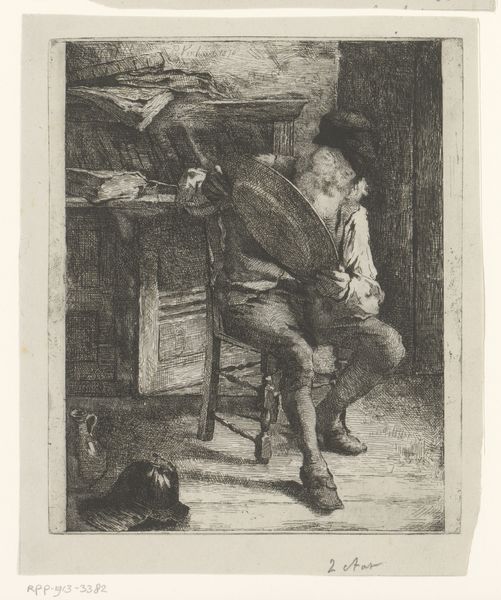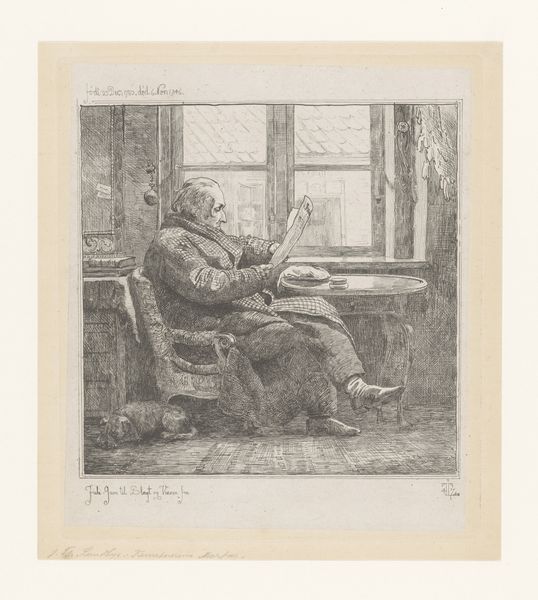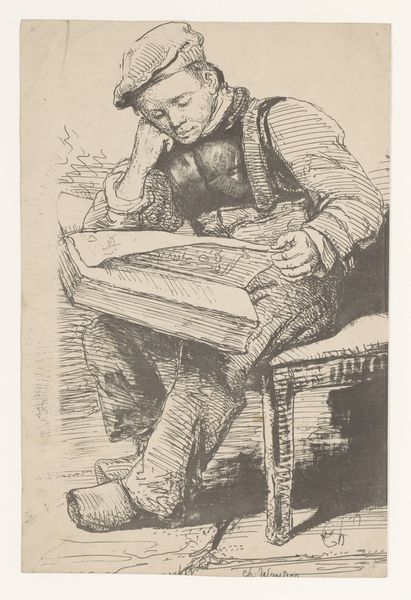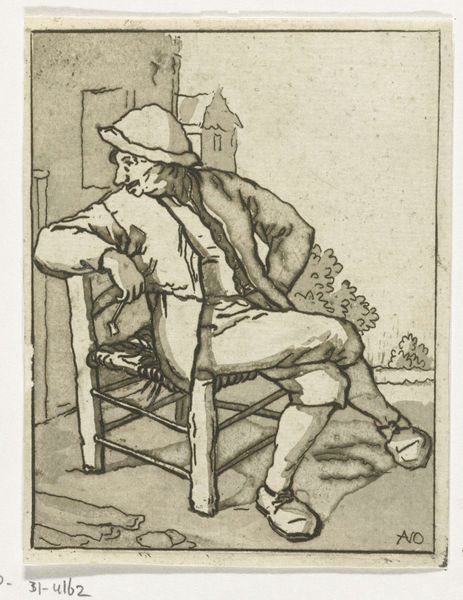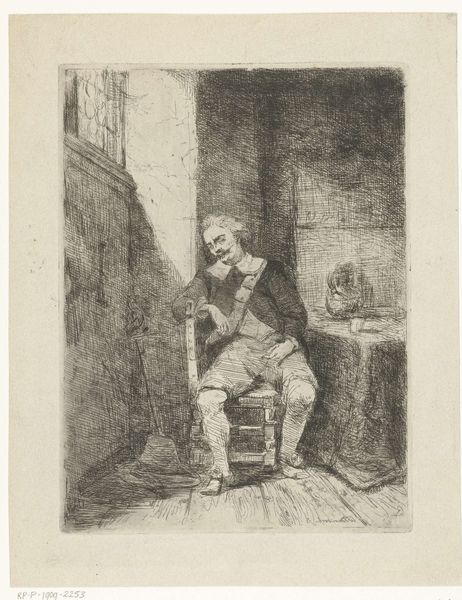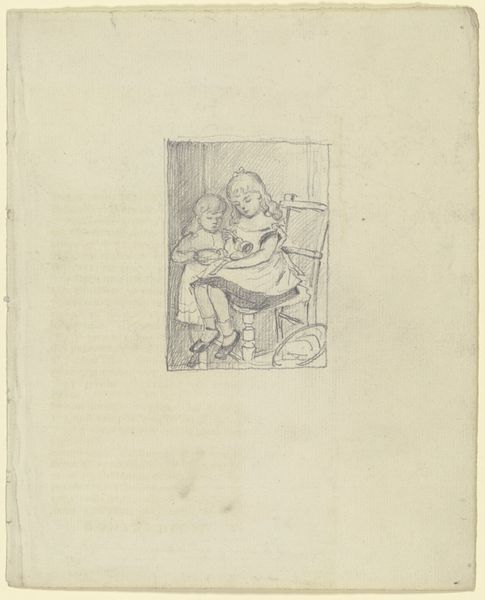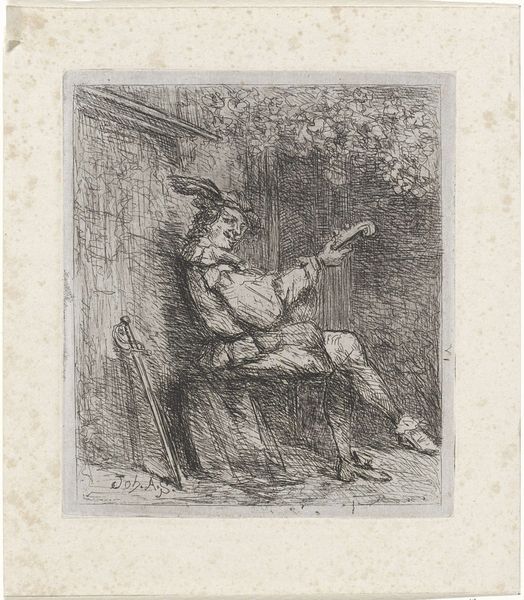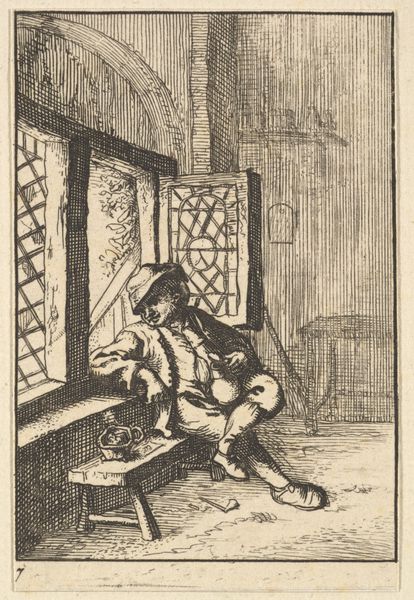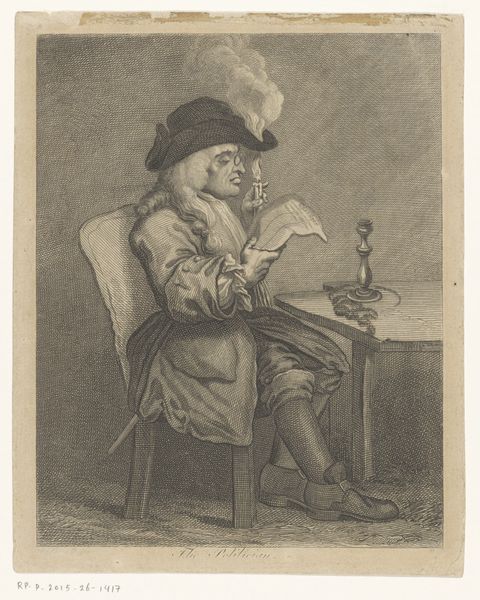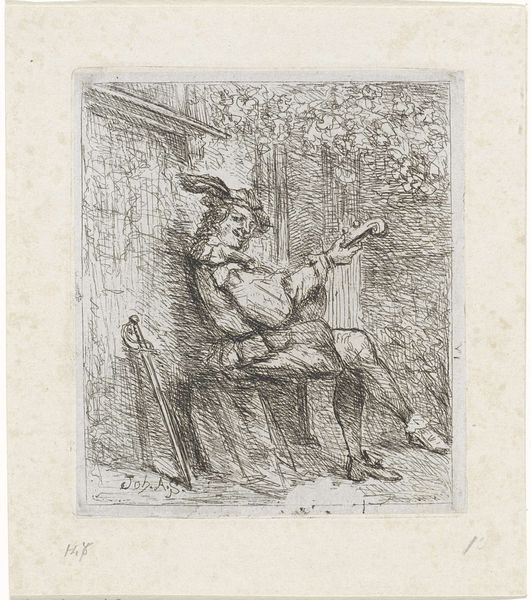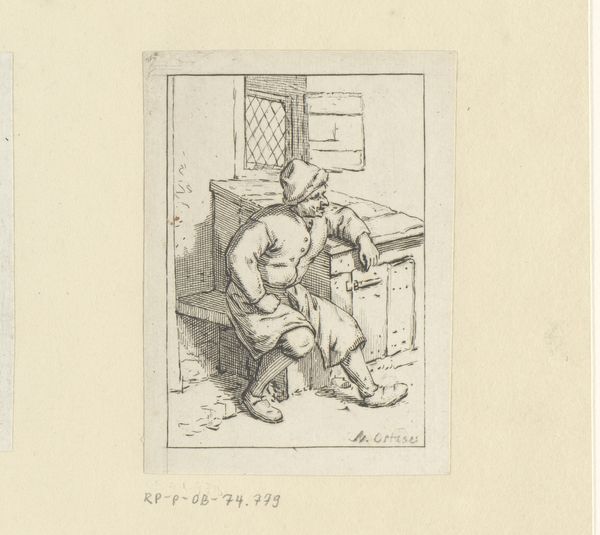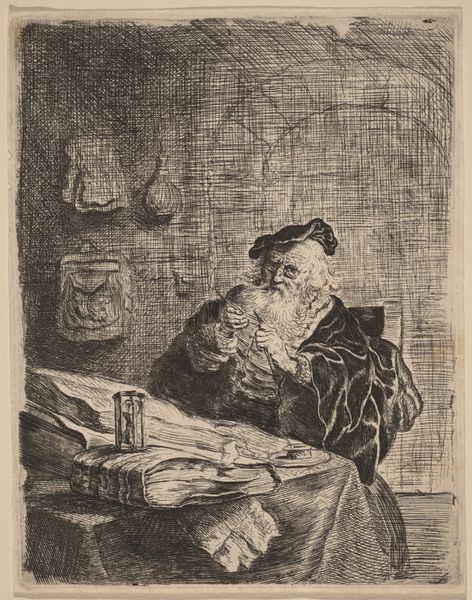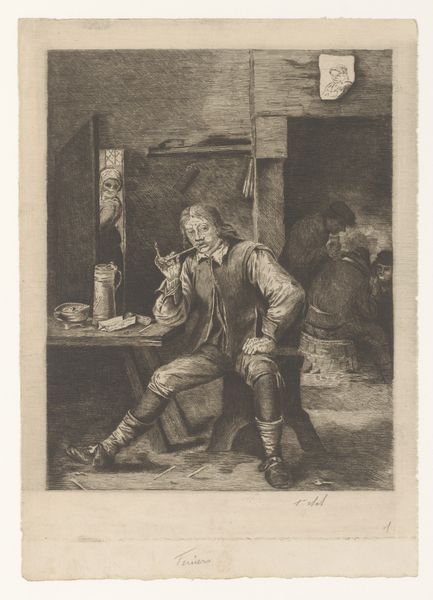
drawing
#
portrait
#
drawing
#
genre-painting
#
realism
Dimensions: 162 mm (height) x 123 mm (width) (bladmaal)
Curator: The artwork before us, "En tyk avislæsende herre med sin kaffe," created by Wilhelm Marstrand between 1870 and 1873, presents a man engrossed in a newspaper. Editor: Right, it's currently held at the SMK in Copenhagen. I'm immediately struck by the intimacy of the scene. There's a certain mundaneness to it—a chubby gentleman casually reading, perhaps at home. How do you interpret this rather ordinary depiction? Curator: That's precisely where the power lies, isn't it? Consider the period: post-1848 revolutions, rising bourgeois culture. What's being depicted here isn't just a man reading a newspaper; it's the rise of the informed public, access to information, and the burgeoning public sphere that increasingly shaped political and social discourse. Who had this access, and who did not? How does gender and class intersect with information and power here? Editor: I hadn't thought about it in those terms. It felt very personal, almost private. Are you suggesting it reflects a larger societal shift toward a more engaged citizenry? Curator: Exactly! And it invites critical inquiry into who is included in that citizenry. Is Marstrand subtly commenting on the privileged access to knowledge? This era saw an increase in literacy, yet access remained deeply uneven, defined by wealth, gender and social status. How do those power dynamics present themselves within the everyday? Editor: So, even in its simplicity, the drawing speaks volumes about social stratification? I guess what initially read as an innocuous portrait becomes a document of social reality. Curator: Precisely! By observing how those with authority engage with new ideas and how such representation interacts with political and social reform, this portrait gains significance. The quiet interior belies the political currents swirling just outside. Editor: This definitely sheds new light on my perception, framing it within the period's dynamics rather than viewing it as an isolated moment. Thank you for drawing out these subtle layers of meaning. Curator: It is imperative that we examine beyond the facade and begin asking, “who does this portrait represent” and perhaps more profoundly, “who does it exclude?” We should encourage our audience to do the same.
Comments
No comments
Be the first to comment and join the conversation on the ultimate creative platform.
